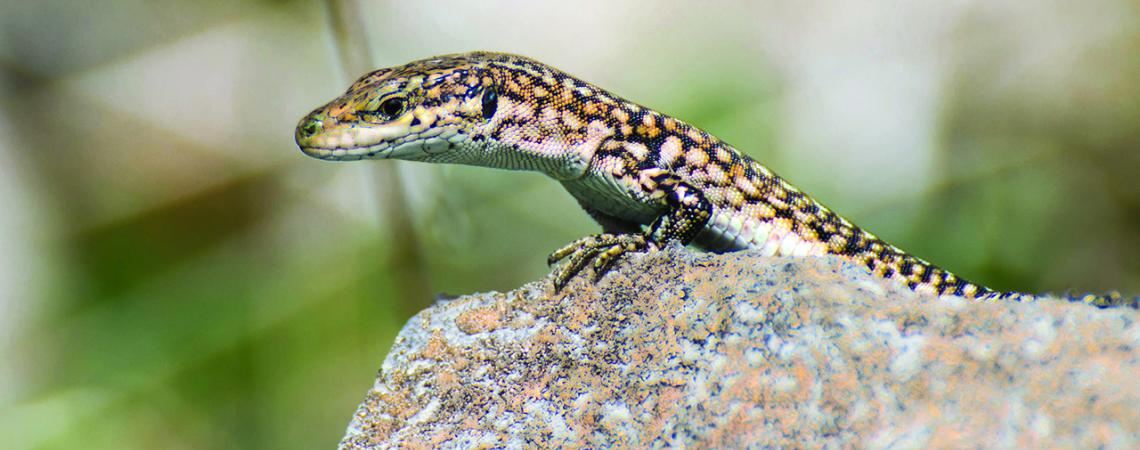Photo credit: Getty Images
In 1951, a young boy was vacationing with his family near Milan, Italy. The boy, George Rau, was a scion of the well-known Lazarus family, which, for generations, ran one of the largest department store chains in Ohio.
Rau became enchanted with the docile lizards that sunned themselves on the rocky walls around Milan, and so he tucked 10 of them into a sock and brought them back to Cincinnati, where he released them in his family’s Torrence Court backyard.
Lazarus department stores are no more — absorbed by the Macy’s chain in 2005 — but the lizards, who apparently found Cincinnati’s climate and topography to their liking, have spread far and wide. Their connection to Ohio’s famed retailer has earned those common European wall lizards the moniker “Lazarus lizards,” and the area surrounding Torrence Court is now known locally as “Lizard Hill.”
Today, the descendants from those 10 — perhaps as few as only three actually procreated — are everywhere in greater Cincinnati; chances are, they’ll be arriving at a rock ledge near you soon. Take a walk on a warm, sunny spring day in Ault Park or Fairview Park in Cincinnati, and you’ll see the lizards basking on the many rock ledges or foraging for food. In some areas, the density of lizards can reach over 1,000 on half a city block, or up to 1,500 an acre, according to the Ohio Department of Natural Resources.
“Their range expansion has been quite far and at high densities,” says Ken Petren, dean of the McMicken College of Arts and Sciences at the University of Cincinnati and an expert on invasive species, who has created a database of the Lazarus lizards’ spread throughout southwestern Ohio.
Reports have documented the lizards’ spread up through rural western Butler County to Oxford (the red bricks and stone walls of Miami University are an ideal habitat), the Kings Island area, Middletown, and even as far as Dublin, Ohio.
Ohio’s other native lizards have been having a tough time of it with urban and suburban expansion gobbling up habitat, but the Lazarus lizards do just fine in the city (and everywhere else).
“The native lizards are at much lower densities and perhaps are even in decline; people don’t see them as often as they have in the past,” Petren says. “The wall lizards, though, have really adapted.”
For the most part, the Lazarus lizards occupy areas that don’t compete with Ohio’s native ones, according to Ryan Dumas, head keeper of the Cincinnati Zoo’s reptile team.
“They typically only occupy areas that haven’t historically been occupied by other lizards,” Dumas says. “In a few areas, five-lined skinks have been outcompeted, but those areas seem to be few.”
The lizards have spread their geographic range in several ways. The rocky beds of railroad tracks prove to be natural corridors for their expansion, so you see them spreading out from Cincinnati along railroad tracks so that coverage maps look like spokes from a wheel. Lizards have been known to hitchhike on floating logs in the Ohio River, which further spreads their population downstream.
They also hitch rides in loads of mulch that are then scattered around town and, Petren says, some people have admitted to moving the lizards themselves (which is illegal).
Anywhere there are southern-facing limestone rock walls, with nearby flat areas for foraging, is prime habitat for the lizards.
While the lizards forage, they also have proven to be tasty snacks for other Ohio critters.
“Birds eat them, especially jays, crows, kestrels, and shrike,” Petren says.
Ohio’s wildlife department has generally welcomed the non-natives, so much so that the lizards are now considered permanent residents.
One thing is certain: The Lazarus lizards all originated from that one boy’s sock.
“We have genetic analysis,” Petren says. “We know they are all from the same source.”









